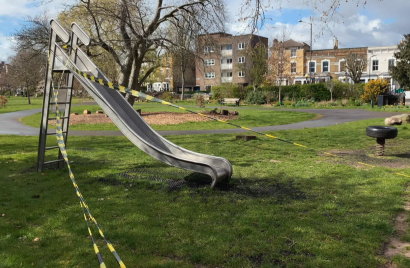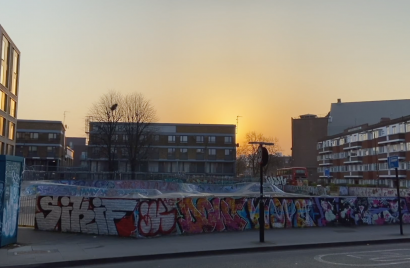
Virgin Media O2 launches summer online safety campaign
Virgin Media O2 and Internet Matters spotlight the importance of having conversations about online safety and starting them early

ENGINE Creative’s latest campaign for Women’s Aid illustrates the realities of life under lockdown for victims of domestic abuse in a film created by a collaboration of industry experts, who never once met.

Being asked to stay at home is an inconvenience for many; an irritation for some; but for victims of domestic abuse around the country it’s a terrifyingly dangerous prospect. Between the 26th March and the 1st April 2020, the national domestic abuse charity Women’s Aid experienced a 41% increase in users visiting their Live Chat site, compared to the previous week, with a significant increase in visitors across all digital support services; the charity’s COVID-19/Coronavirus advice page for survivors has had 27,000 page views since its launch.
Women’s Aid have worked with the creative agency ENGINE for many years, having demonstrated the terror of coercive control in a graphic press ad in an earlier campaign. In this frightening time for many, the agency decided to work pro bono to produce a new campaign that demonstrates the reality of life under lockdown when you’re the victim of domestic abuse.
The latest campaign, ‘The Lockdown’, created by ENGINE Creative and production company Knucklehead captures empty streets throughout the UK, the camera panning through vacant playgrounds and deserted public spaces. The copy on screen then points out the reality that, while the nation is on lockdown to prevent the spread of coronavirus, domestic abusers and their partners are self-isolating at home, together, heightening the possibility for abusive situations to arise.
It’s incredibly galvanising when a group of creatives and makers come together, all behind the same idea with a passion to get such an important message out there.
Christopher Ringsell
‘The Lockdown’ work was created by a team of collaborators all working within current government guidelines. Film footage was taken on phones as part of daily exercise excursions and shared between the team remotely while editing, grading and reviews were all done from home working spaces. Thanks to the wonder of online conference calls, and the speed at which each individual worked, the resulting campaign was created by a team who never once met.
Christopher Ringsell, Creative Director at ENGINE who worked on the campaign revealed that it was in fact, made in a week. From the presentation and go ahead from the client on the Thursday, to conversations with the director on the Friday and shooting over the weekend, the campaign was finished and signed off by the following Friday.
Ringsell feels that, “It’s incredibly galvanising when a group of creatives and makers come together, all behind the same idea with a passion to get such an important message out there.” Ringsell says that many of the team had worked together in the past and he believed in the passion and talents of each individual to add something to the team.
‘The Lockdown’ is an amazing example of the power of creative collaboration to traverse distance and unite creatives. From Tim Katz, Managing Partner at Knucklehead, to The Mill’s colourist and senior sound designer James Bamford and Ben Leeves, to Rebecca Luff, editor at Cut+Run – the project shows the sort of boundless achievement made possible when everyone throws their weight behind a cause.
As the government guidelines tightened, the team quickly realised that they were going to have to operate in a different and adaptable way for this shoot. The reality was, says Ringsell, that the team were building the story as they went; it was the epitome of each member of the team learning on the job but also sharing their expertise and experience with one another.
The team were briefed by the director about how to shoot on a phone, with lessons on settings delivered via calls. Then five members of the team took to their bikes, realising, says Ringsell, “that by using bikes we could travel around the vicinity of the areas we live without interacting with anyone.” Over the three days of shooting, Ringsell explained, the team examined the shots and pulled together a narrative arc that depicted usually busy central London hubs as well as the more residential areas where people live.
“We skipped parts of the usual process buoyed on by a hunger and passion to tell the story and land the idea,” says Ringsell, capturing the realities of creating a campaign under lockdown where time is precious and multiple meetings rendered pointless. Through the beauty of technology, as many of us are learning, conversations can be continuous and ongoing. Ringsell added, “WhatsApp became a continuous stream of alerts as we shared shots, ideas and frames on the fly,” all whilst being “constantly herded by the producer trying to keep some sort of order!”
We skipped parts of the usual process buoyed on by a hunger and passion to tell the story and land the idea.
Christopher Ringsell
A usual day in the life of an advertising set includes multiple flat whites, poke bowls and, usually, a pretty hefty price tag on the travel. Indeed, the creative and producer’s last job saw them fly to South America for a £1.5 million shoot.
This set was different, markedly so, but also demonstrated what can be achieved when ‘usual’ shoot resources appear to be limited. ‘The Lockdown’ shoot had zero emissions; no plastic water bottles; no vehicles, except those powered by the crew’s own two feet. It was one of virtual high fives and evening beers, says Ringsell, adding, “It's humbling that so many talented people from adland saw the potential and rolled up their sleeves. This has been an amazing collaboration, driven by a passion to get awareness for Women’s Aid out there in such difficult times, and hopefully raise much needed funds.”
The work Women’s Aid do does? has perhaps never been more important than it is now. As many people around the country find themselves isolated and alone, whether that is physically or mentally, many others are fearing for their lives every day. Nicki Norman, Acting Chief Executive at Women’s Aid pointed out that it is the charity’s digital and online services that are of most use to people at the moment, as they can be used “discreetly, quietly and in private.” It is these services, and those more locally, that need the public’s support, urging people to donate to the charity’s emergency appeal – www.womensaid.org.uk/urgent-appeal
Creativity, as we’ve seen over the past few weeks, can be a powerful force for good when people pool their skills and resources; when people forgo the usual cross-industry competitiveness and instead focus on what teams can achieve together. As the crisis looks only set to continue, remotely shot shoots and teams that only ever meet online will become the norm, at least for now. And perhaps in the future there will be learnings we can take as an industry from the experience that greener, kinder, collaborative behaviour still produces powerful, impactful creative work.


Stills from 'The Lockdown' by ENGINE Creative
Looks like you need to create a Creativebrief account to perform this action.
Create account Sign inLooks like you need to create a Creativebrief account to perform this action.
Create account Sign in